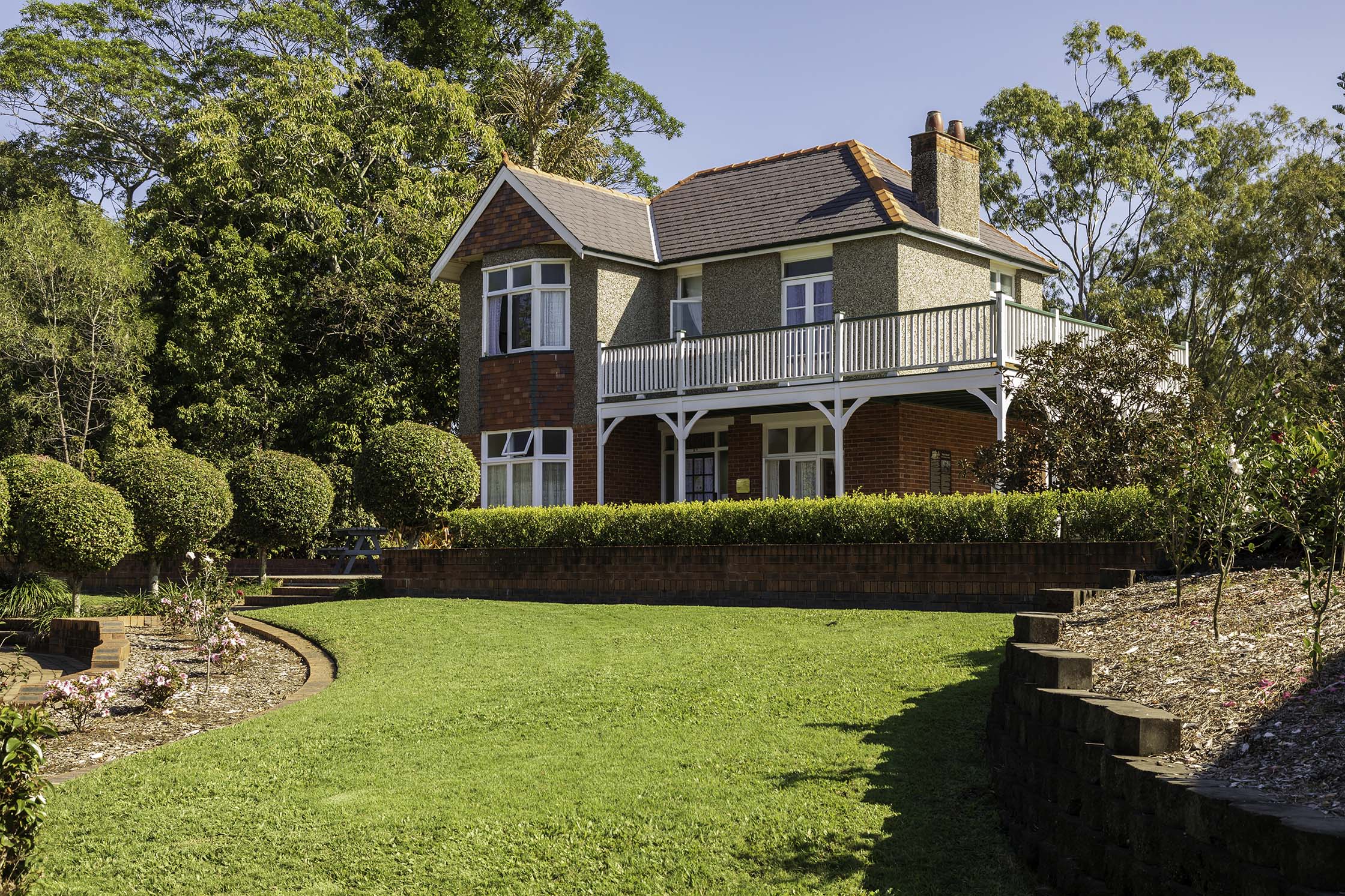Hinkler House an enduring
connection to aviator
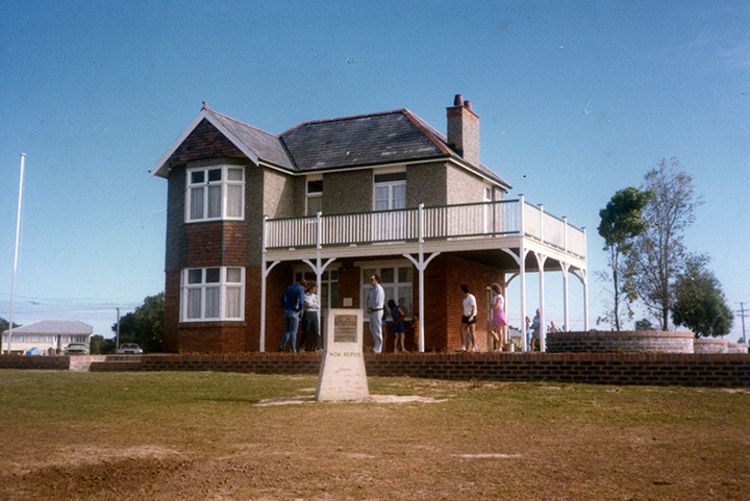
Sitting proudly within the manicured lawns of the Bundaberg Botanic Gardens is Bert Hinkler’s English home which was dismantled and rebuilt in its current location 40 years ago.
In celebration of Australian Heritage Festival we take a look back at the incredible series of events which saw this physical connection to the pioneer aviator preserved.
Originally built by Bert and Nance in 1925 in Southampton, England, the house was scheduled for demolition in the early 1980s.
A passionate group of locals, led by Lex Rowland alongside Stan Lohse and Merv Purkiss who were dedicated to preserving the memory of the aviation great, steered a community campaign to purchase and relocate the house.
The project, which has provided the Bundaberg Region with not only an enduring tourist attraction but a lasting personal legacy of the feats of the pioneer aviator, was completed through hours of volunteer labour.
The Hinkler House Memorial Museum and Research Association Inc website details the relocation efforts, contributing the project’s success to the fundraising of $60,000 and those who worked tirelessly throughout the process, especially the East Bundaberg Rotary Club.
Hinkler House was painstakingly rebuilt, brick-by-brick, and was officially opened on 16 June 1984 by then Premier of Queensland Sir Johannes Bjelke-Petersen.
Around 4,500 people attended the opening which was marked by a special flyover by an American Air Force Starlifter aircraft and the local Bundaberg Aero Club.
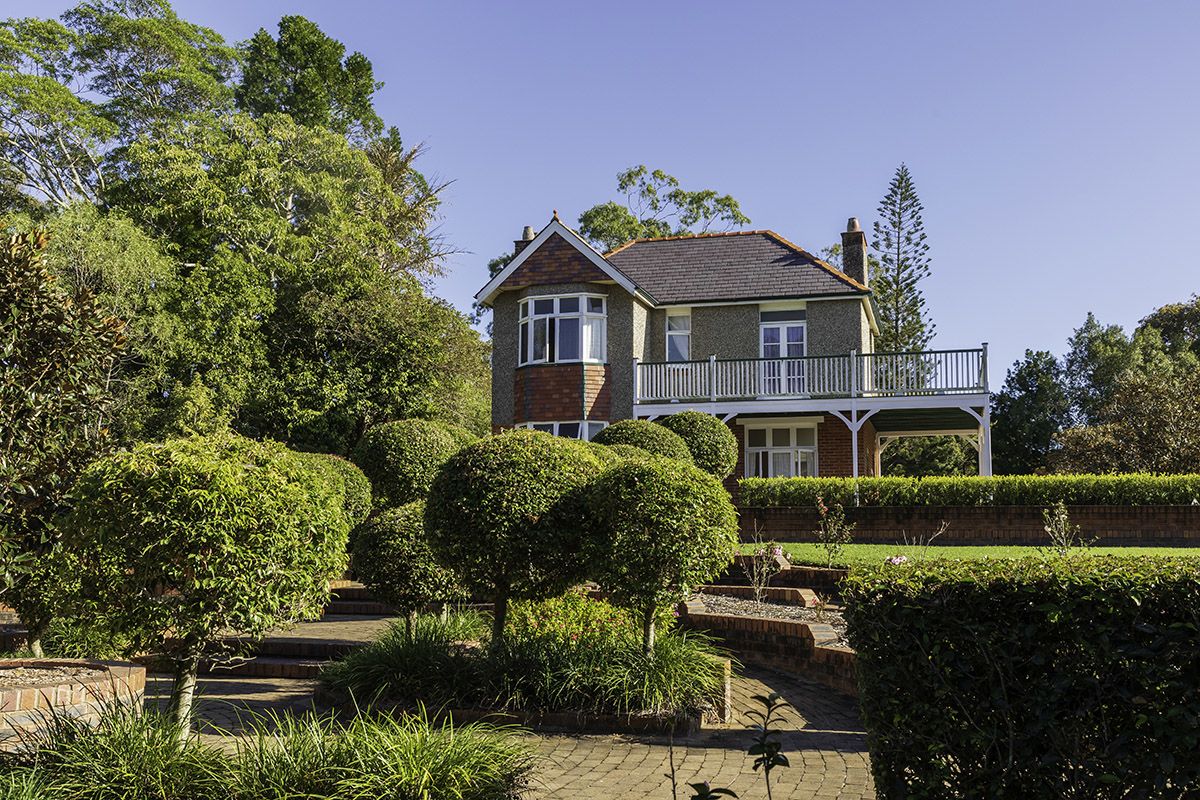
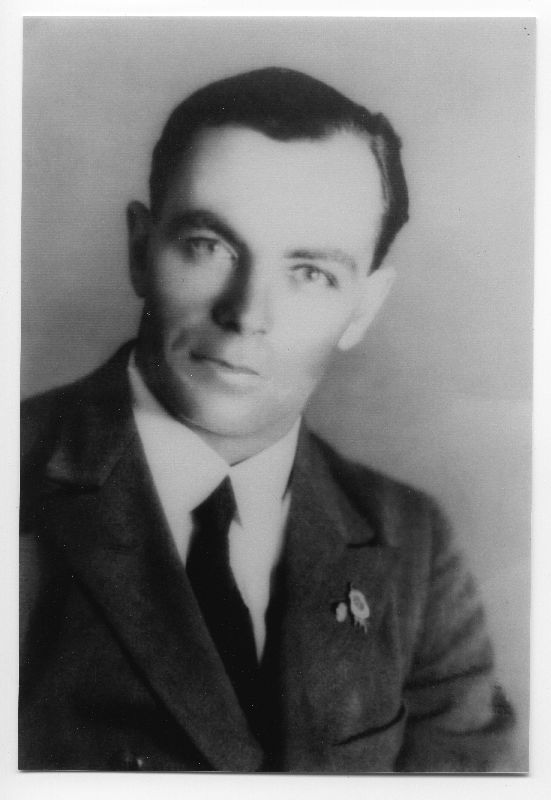
Bert Hinkler. Image courtesy Hinkler Hall of Aviation
Bert Hinkler. Image courtesy Hinkler Hall of Aviation
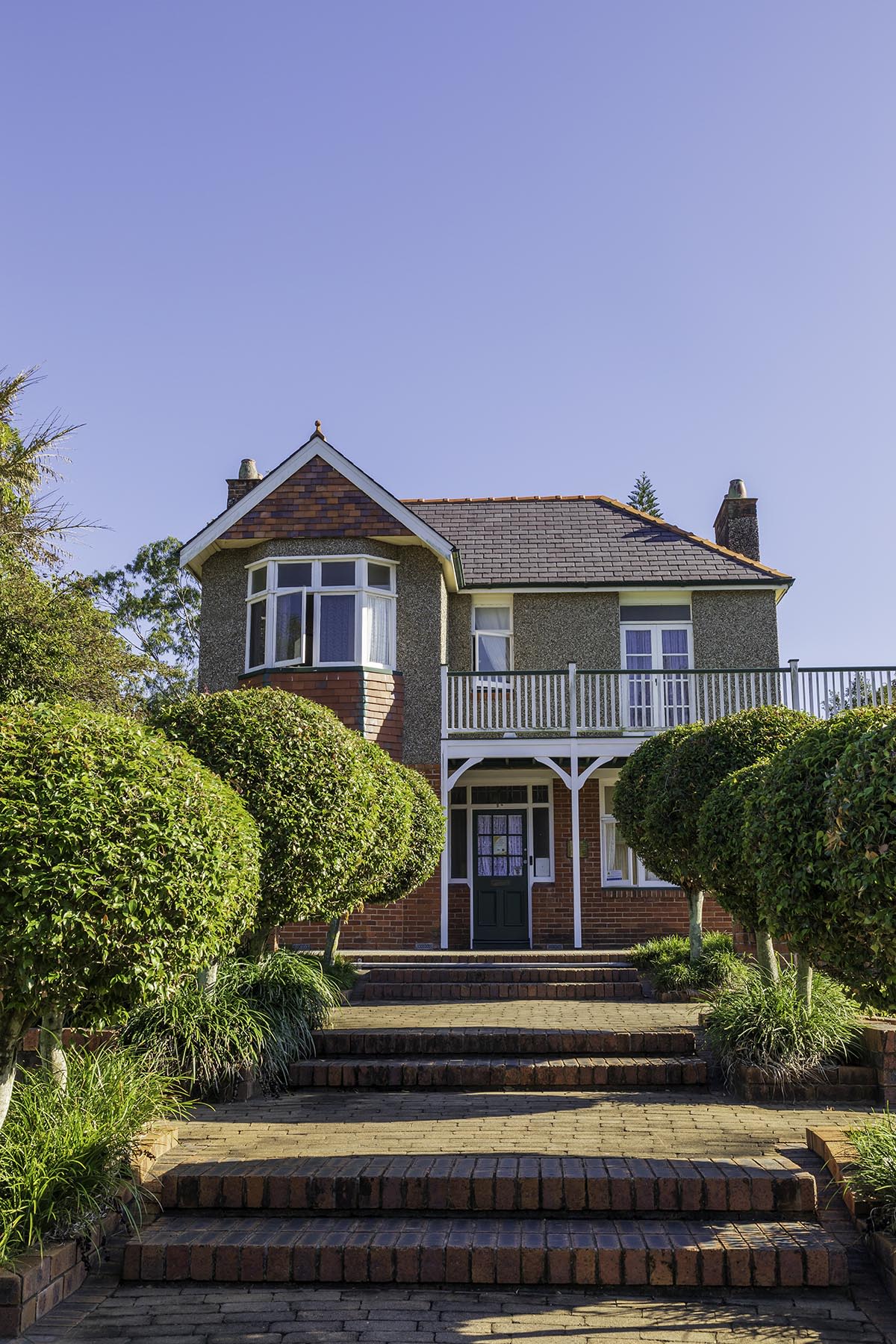
Hinkler House
Now famous the world over, Bert was born in Bundaberg on 8 December 1892, the son of a sugar mill worker.
By the age of 19 he had hand-built man-carrying gliders and already flew them successfully at picturesque Mon Repos Beach on the region’s shoreline.
Within a few short years he has set world records for solo flights and was a respected officer of the Royal Naval Air Service.
His captivation with the wonders of air travel took him across the world and made him a pioneer and household name.
In 1925 Bert and Nance built the English home on the Thornhill Estate Southampton, England.
Bert named his English house ‘Mon Repos’ in honour of his hometown and the beach that served as his early flight testing grounds.
"‘Mon Repos’ was a substantially built residence of cavity brick construction,” the Hinkler House Memorial Museum and Research Association Inc website said.
“The flooring boards, joists and roof rafters are of Baltic pine while the architraves, balustrades and mouldings are of European red wood.
“The ceilings are of lath and plaster.”
The faced and common bricks were made at the Burlesdon Brick Works near Southampton.
“The Welsh slate roof compliments this English detached cottage.”
Following Bert’s tragic death on Mt Pratomagno in Italy on January 7, 1933, Nance continued to live in the residence until 1952 when it became council property.
Passion sparks plan to save house
About 30 years later Bundaberg engineer Lex Rowland, concerned by media reports that the Bert Hinkler’s English home was scheduled for demolition by the Southampton Council to make way for old age units, submitted a proposal to relocate the house to Bundaberg as a Bicentennial Project.
“It was a big event for Bundaberg,” Lex said.
“I’ve had people ask me ‘how did you recruit all the people Lex?’.
“Well I didn’t - they came to me and they just wanted to help.
“It was out of those persons that I eventually put a committee together.
“During all this time I did all the liaison with the Southampton Council completely then eventually we put it back to the Bicentennial Committee.”
The city’s Bicentennial Committee was in favour and a sub-committee was appointed and approaches were made to the Southampton City Council to defer the demolition.
The Southampton City Council gave the sub-committee until March 1983 to provide a financial plan. A work schedule was prepared, which would ensure the house was removed by 30 June 1983.
The deadlines were set and the sub-committee sought State Government backing in addition to private donations, totalling $60,000.
Lex began the arduous task of developing a work plan and a component schedule to ensure the project had a clear direction during dismantling.
“Everything had to be numbered properly and put into groups and piles, such as window frames and architraves and door locks, and everything had to be grouped together,” Lex explained.
“That was a pretty big job.”
The aim was to systemise the reconstruction and ensure everything was rebuilt in its original spot.
This planning would be later found to be felicitous as, after checking the measurements against the plan, it was clear the house had been built 12 inches out of square so Lex said the plan proved vital during reconstruction.
Lex said it was a huge story in its day with media in Australia and England covering every step of the journey.
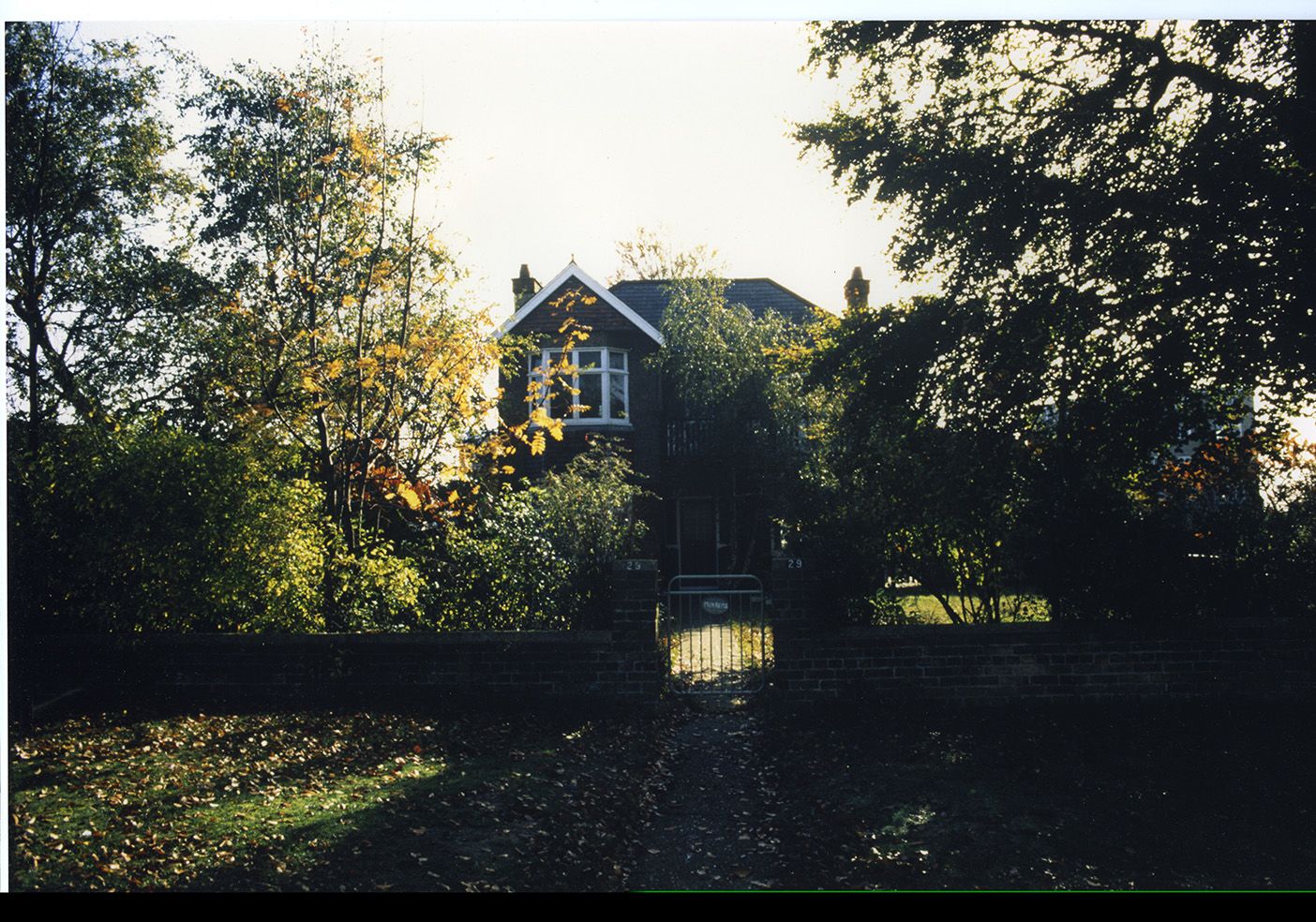
Dismantling a big job
Brick by Brick is a documentary on display at the Hinkler Hall of Aviation, which now sits alongside Hinkler House in the Bundaberg Botanic Gardens.
It captured the story of the relocation of Hinkler House as told by Lex, Stan, Tom Quinn and Bert Bent - four of the men directly involved in the relocation and rebuilding of the now famous house.
In the documentary Lex said he was nominated to lead the expedition and travelled to England with Stan and Merv.
“So in early May we set off for Southampton - Stan and Merv and I - to dismantle Bert's old home,” Lex said.
“Stan was sitting beside me on the plane and he said ‘hey Lex, how do you think these bricks are put together?’.
“He said ‘well, if they are cemented together’, he said, ‘we've got a major problem on our hands’.”
As they stood on Thornhill Estate and looked upon ‘Mon Repos’ for the first time this potential issue was still top of mind and Stan tested the mortar by chipping a small portion away.
“I can still hear the joy in his voice to this day,” Lex recalled in Brick by Brick.
“He said, ‘we're right mate’, he said ‘the bricks will come out easy’.
“So we went around and we photographed every corner of the house and we commenced the dismantling, marking every brick, every joist.
“We never had any gear, so we manhandled all the bricks down from the top story, down to the floor.”
It was hard going in those initial days, particularly in relation to the roof which was made from Welsh slate and was a material the Bundaberg crew was unfamiliar with.
Lex said that was until the arrival of a “guardian angel” in the form of the slaters and tilers from British Aerospace.
They provided three fourth year Scottish apprentices who brought their own tools to assist with the dismantling.
“With their assistance we started to make progress,” Lex said.
“As Stan predicted the bricks started to come out lovely – sweetly – every one we tapped came out.”
Over the course of the dismantling British, Dutch and Australian naval personnel chipped in over their holiday at the Easter break to scratch all the mortar off the bricks.
“And I said to them, thank you very much.
“And the reply was, ‘we're doing it for Bert, he was one of the greatest’.”
The dismantled house was loaded into shipping containers and transported to Bundaberg.
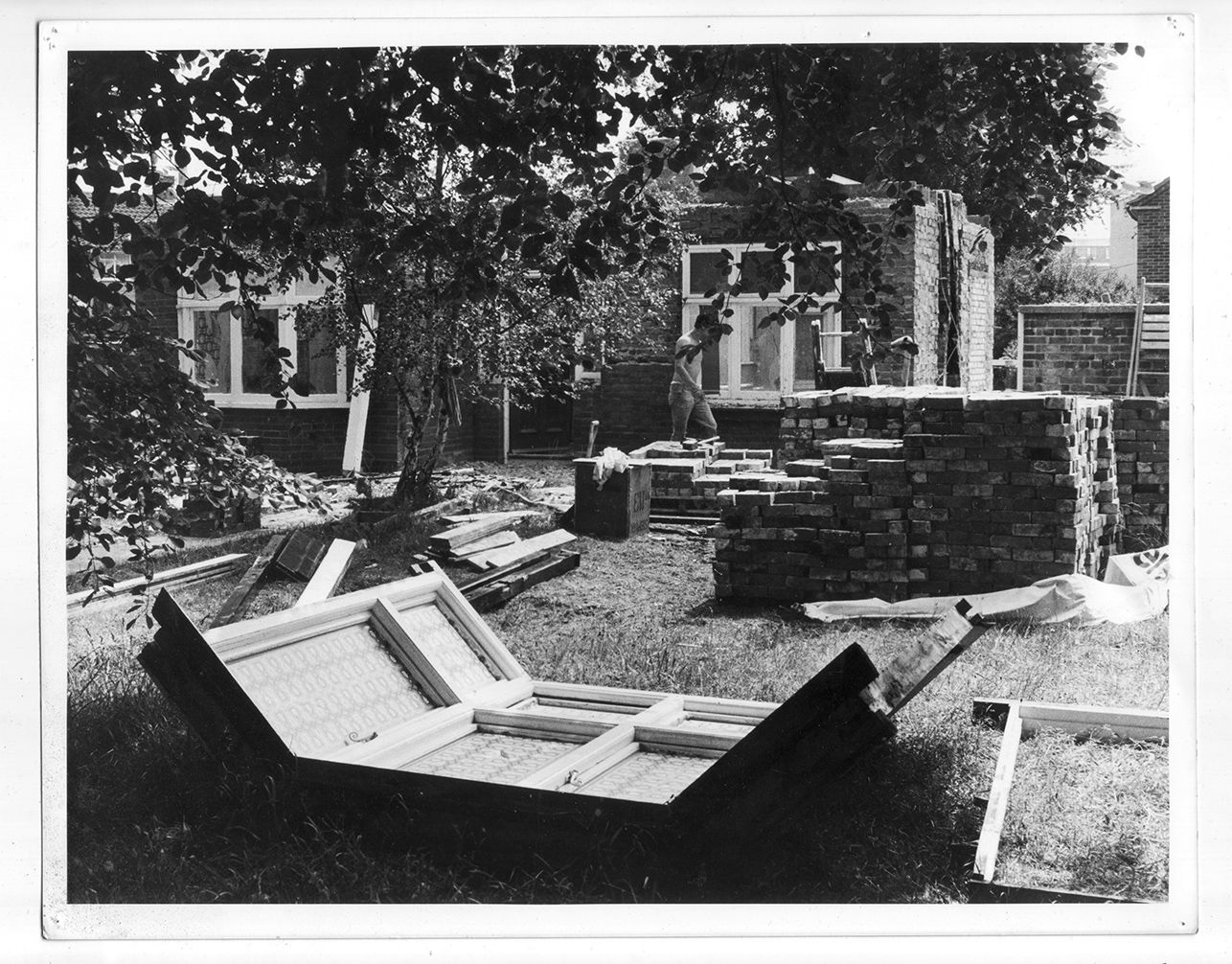
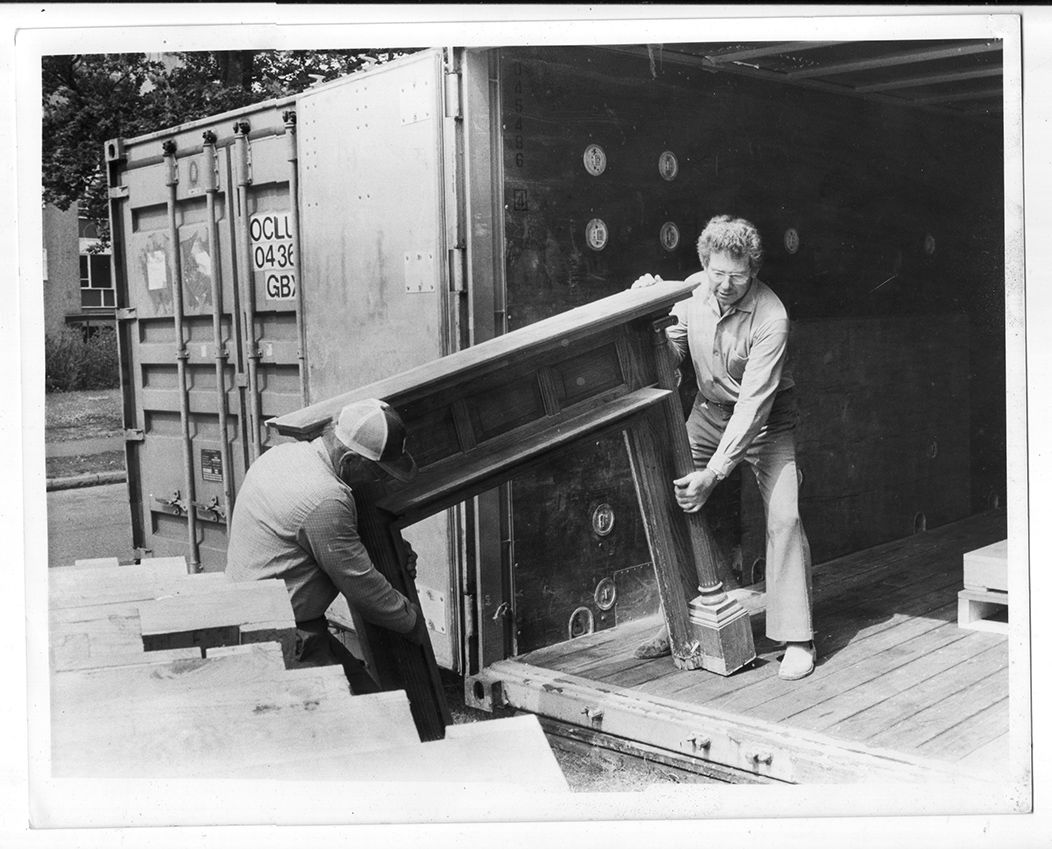
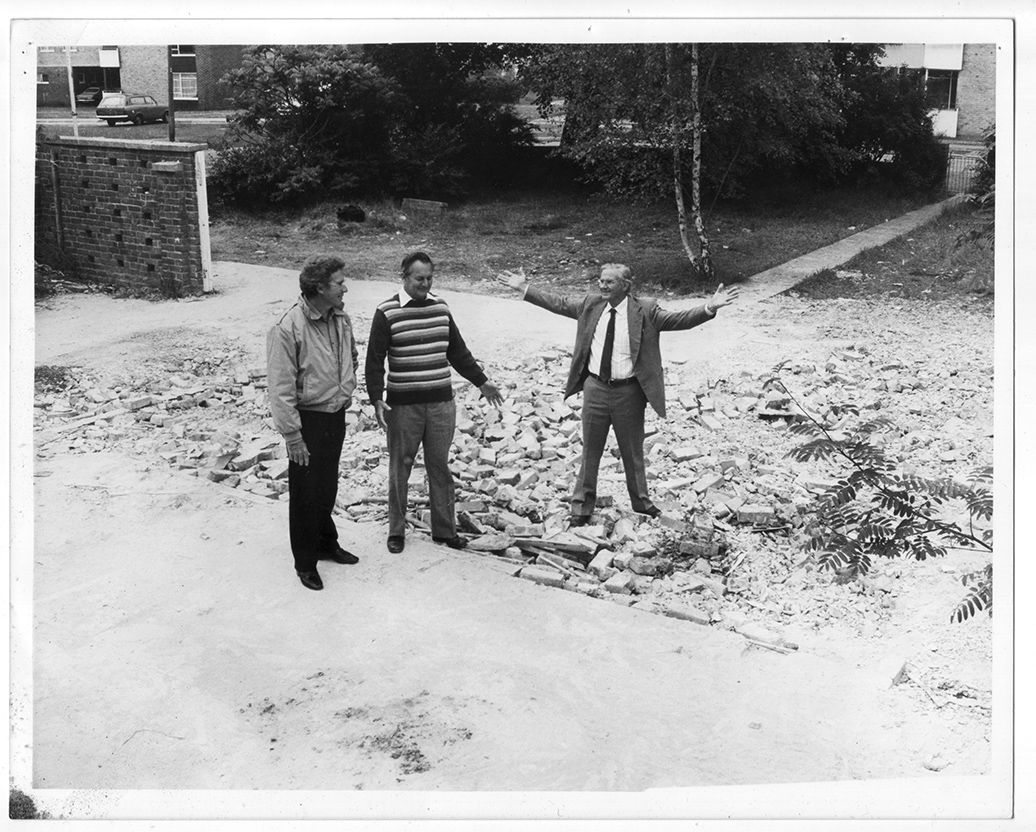
The rebuild begins
The sub-committee didn’t have to deliberate overlong about how they would achieve the rebuild without funds for the work as more volunteers came forward.
The East Rotary Club, led by Bert Bent as coordinator, completed the rebuild project entirely from volunteer hours.
Lex said the outpouring of community support was incredible and he believed that came down to the memory of Bert Hinkler with his incredible feats still in living memory for many residents at the time.
“Every day there was someone– ‘Lex you’ll need a brick layer’ or ‘you’ll need some plumbers and trenchers’ and ‘you’ll need a plasterer’.
“People were just wanting to help and you don’t see that very often especially on a major project like that.”
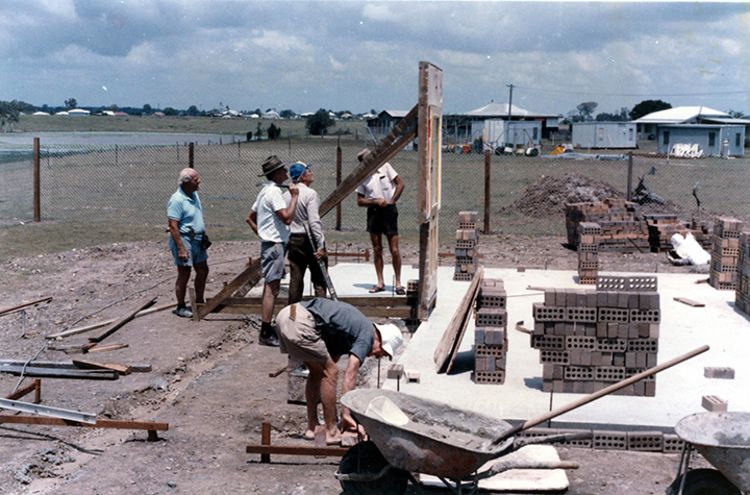
The significance of the location
Bundaberg Regional Council’s Local Heritage Places placecard details the siting of Hinkler House within the then planned Botanic Gardens and the significance it held for his aviation career.
“The reconstructed building has a special association with the life of Bundaberg pioneering aviator Bert Hinkler, as his English home until his death in 1933,” the Local Heritage Places report reads.
“The Bundaberg Botanic Garden location of the house is significant as it is adjacent to Hinkler’s North Bundaberg State School and the lagoon where he spent many hours observing the flight of birds, especially the ibis, which contributed greatly to his aviation achievements.”
According to Lex, much of North Bundaberg at that time was part of the Gavegan lake system, including the lagoon which can still be found in the botanic gardens in front of the relocated Hinkler House.
Lex remembers well the debate between the Councils of the day with strong interest from Woongarra and Gooburrum Shires in addition to the then Bundaberg City Council.
“They were all vying for the opportunity to have the house placed in their divisions,” he explained.
“The press was absolutely phenomenal about the three-way contest that was going on here in Bundaberg.”
While it was not yet developed from its origins on an old stock route, Lex said plans had already been laid for the establishment of the Bundaberg Botanic Gardens in their current location, which was put forward as an option for the location of ‘Mon Repos’ house.
“Stan and I were both out there at the airport enroute to England when someone came up to me and said ‘Lex are you happy for the house to be in the new Botanic Gardens?’.”
Lex sad it was very close to Bert’s birth place and he had run all over North Bundaberg as a child.
“So my choice was very clear.”
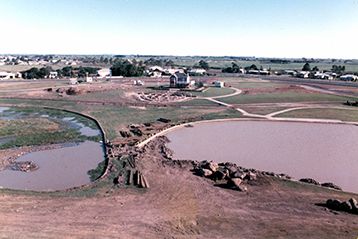
Passion continues to maintain Hinkler connection
The passion and drive which saw this incredible project come to fruition has prevailed, with Lex continuing to play a role in the Hinkler House Memorial Museum and Research Association Inc to this day.
“We’ve been a registered charitable organisation since 1996,” he said.
“We ran the museum for 25 years after we opened the home and put together an incredible collection of Hinkler-related memorabilia.
“Which is all over there in the archives at Hinkler Hall of Aviation there now and we’re trying to advance it as much as we can.
“It’s being done, but slowly.
“The collection itself I’d say at present time is in fairly good hands.”
The collection is now managed by the Bundaberg Regional Council team at Hinkler Hall of Aviation which is making continuous improvements to its management.
Since 2018 updates have been made to the collection management procedures/policies, new collection management system and two year audits of the collection have been introduced.
The team has completed a Queensland Museum Standards Review in 2021, Significance Assessment in 2022 and Preservation Needs Assessment in 2023 (obtained through CHG grants) and is now applying for stage three of the CHG grant for “Conservation and Collection Management Activities”.
Lex firmly believes that Bert Hinkler remains an important historical figure in world aviation.
“Hinkler’s life and his achievements and his works and his inventions, in a way, they haven’t seen the light of day.
“It’s a huge story.
“The history lay dormant for 60 years after he came in ’28 until we started on the house project and the community, they were just wonderful and they were proud to do something for Bert.
“It was an incredible life, as short as it was.”
Visitors to the Botanic Gardens can tour Hinkler House and learn more about Bert’s life and achievements at the Hinkler Hall of Aviation, with tickets available online.
The Brick by Brick documentary can be viewed in full in the Hinkler Hall of Aviation foyer.
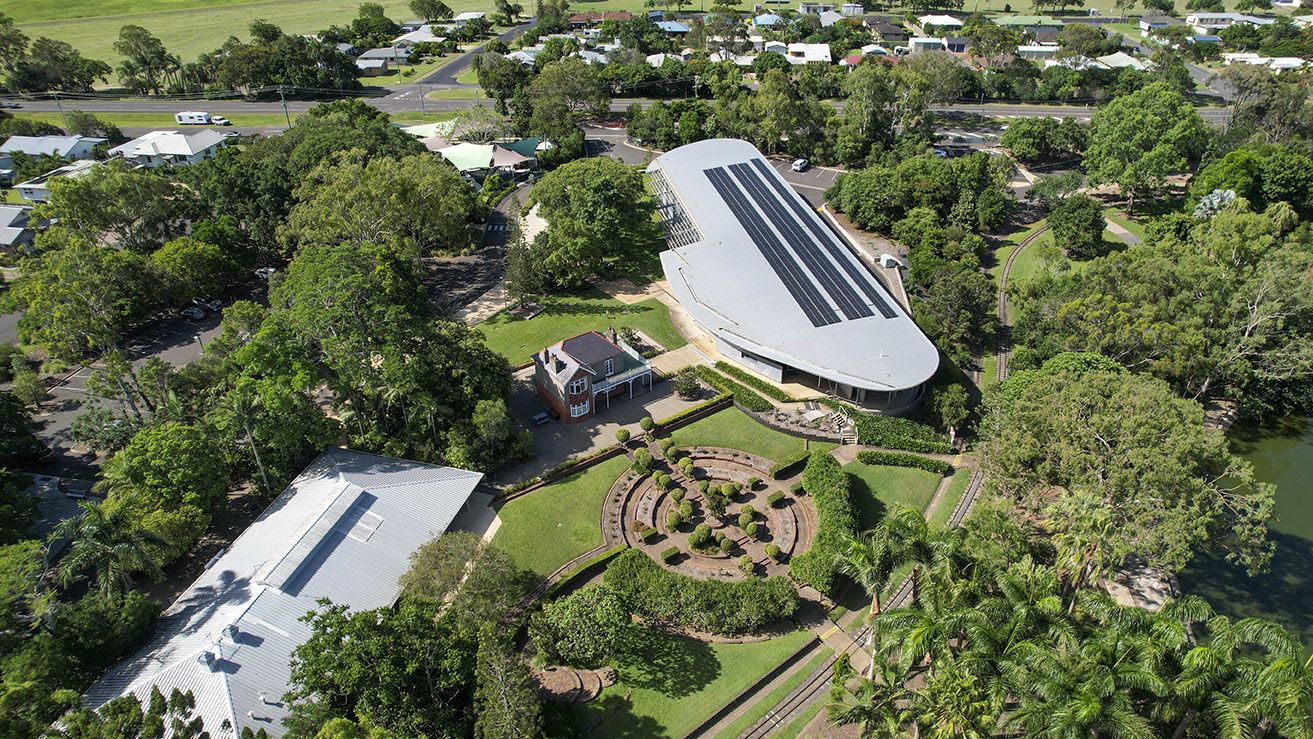
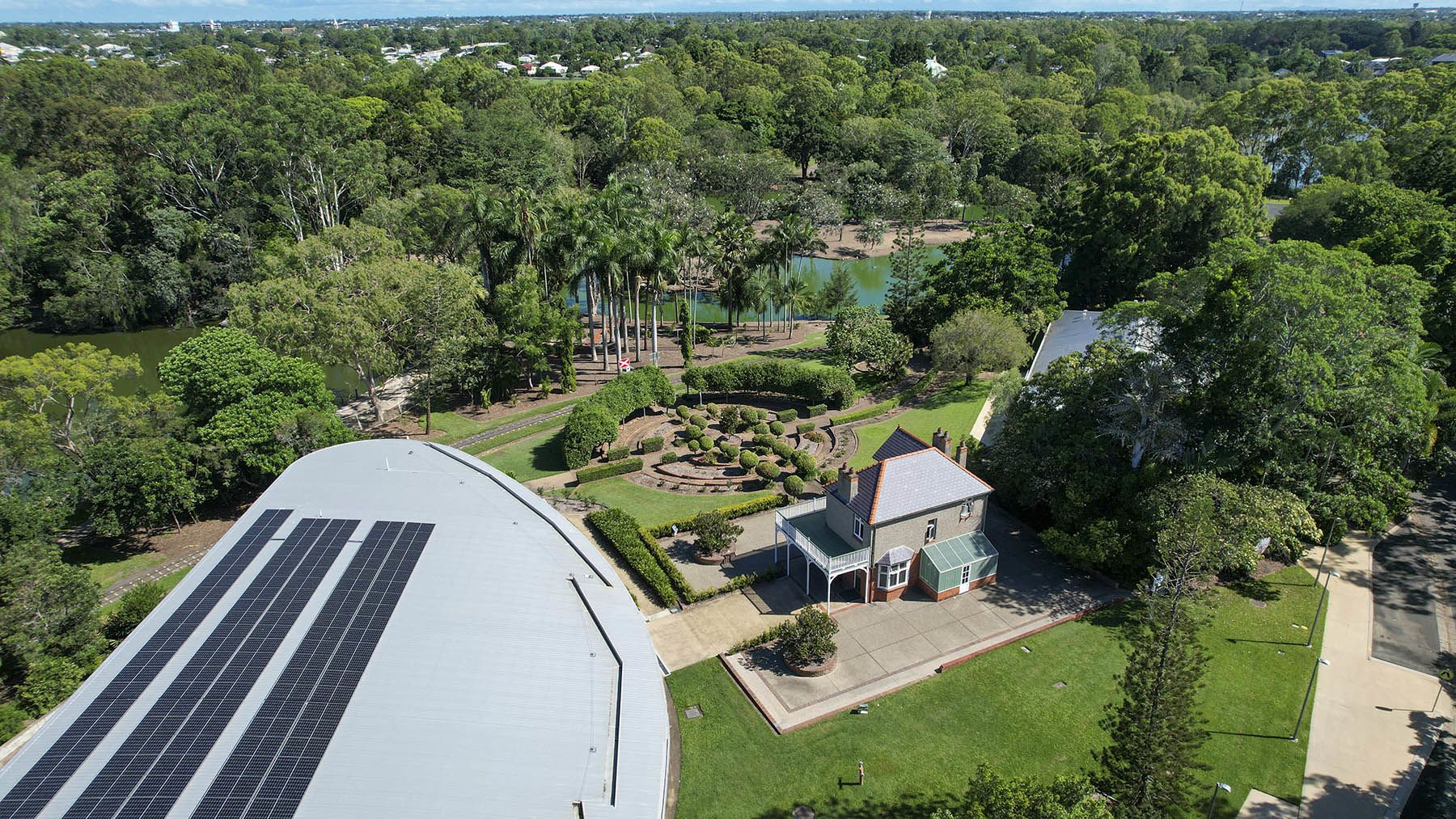
Timeline of the relocation of
Hinkler House
1925
The beginnings of 'Mon Repos' house
‘Mon Repos’ was built on the Thornhill Estate Southampton, England, by H.W. Small of Bitterne for Bert & Nance Hinkler
1952
Still home for Nance
Following Bert’s tragic death on Mt Pratomagno in Italy on January 7, 1933, Nance continued to live in the residence until it became council property.
1974
Home's significance recognised
An historic marker and plaque were unveiled at the house on Thornhill presented by the Royal Queensland Aero Club and the Queensland Museum. This marker now proudly stands alongside the relocated ‘Mon Repos’ at the Hinkler House Memorial Museum in Bundaberg.
1982
Plans to demolish prompt relocation effort
The Egans, the last of many families to occupy ‘Mon Repos’, vacated in December and it was learned that the Southampton City Council planned to demolish the house to make way for a block of old age units.
The proposal to relocate the house was put to the Bundaberg District Bicentennial Co-ordinating Committee and accepted, a sub-committee was appointed.
1983
Relocation given green light
Following approaches to the Southampton City Council to defer the demolition the sub-committee was given until March 1983 to provide a financial plan. A work schedule was prepared, which would ensure the house was removed by 30 June 1983.
1984
Plans to demolish prompt relocation effort
On 16 June 1984, ‘Mon Repos’ was officially opened at its new Bundaberg location by the Premier of Queensland Sir Johannes Bjelke-Petersen and the former Mayor of Southampton, Councillor Dorothy Brown.
Thank you
This detailed history of the relocation of Bert Hinkler's English home was created with information and support from Lex Rowland and the following organisations:
Content:
Hinkler Hall of Aviation
Hinkler House Memorial Museum and Research Association Inc
Imagery:
Hinkler Hall of Aviation
Picture Bundaberg
